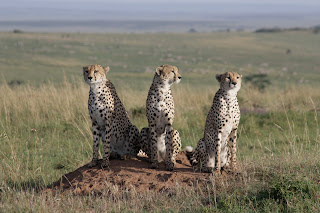 |
| Largest Ivory stock set on fire |
Kenya demonstrated for the fourth
time their determination in the war against poachers and illegal smuggling of
protected animal trophies. Twelve towers
made up of tusks estimated to be from about 8,000 elephants and rhino horns
from 343 animals were burnt on 30th of April.
The event brought together heads of state from several African nations and hundreds of onlookers who came to witness Kenyan President Uhuru Kenyatta incinerating $172 million worth of illicit wildlife goods. This was the most significant demonstration against poaching in the region and the largest burn of illegal wildlife products in history. It took Kenya's Wildlife Service’s 10 days to build the crematorium. This was Kenya's fourth such burn in a practice that goes back to 1989 during the retired president Daniel arap Moi term.
The burning of the ivory
highlights the continuing crisis in elephant populations. About 30,000 to
50,000 elephants a year were killed from 2008 to 2013 alone, according to the
Born Free Foundation, and the rate of killing surpasses the rate of births in
Africa.
In 2008, the ban on ivory was
lifted temporarily to allow stockpiles to be sold to the profit of the
countries that owned them. But according to campaigners this resulted in a
“spike” in poaching, with about 100,000 elephants lost as a result.
There are other methods deployed to
discouraging poaching, such as removing tusks and dyeing rhino horns, but have
had little effect in reduce poaching. The type of poaching currently witnessed
is fueled by conflict and organized crime, where militias have used their arms,
to wage war on the wardens of conservation areas and on local populations.
The debate on legalizing trade in
Ivory has been brewing since at least 1989, when the Convention on
International Trade in Endangered Species (CITES) voted to "ban" the
international trade in ivory after a ferocious wave of poaching in Africa that
left hundreds of thousands of elephants butchered.
 That question facing
That question facing African countries in their fight against the multimillion-dollar illegal ivory trade. Is weather to burn or not to burn, countries such as Botswana and Zimbabwe have been more successful in conserving their wildlife. They therefore believe that they have the right to offload their excess stock in a regulated way to a given market, the proceeds from the sale goes back to communities and conservation. They have in the past been lobbying to have the ban lifted. However, experts have argued that additional killing of elephants by countries with surplus, even if legal, is not sustainable. The 1989 ban on ivory trade must be kept in place to protect elephants, especially now that poaching has once again risen to catastrophic levels.

















0 comments:
Post a Comment